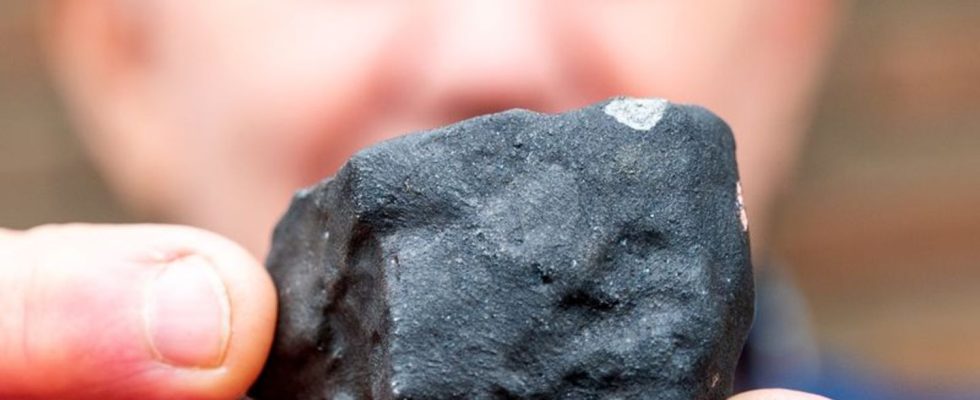Schleswig Holstein
Elmshorn meteorite is from early solar system
Homeowner Wilfried Labusch with a small meteorite that fell. photo
© Daniel Bockwoldt/dpa
At the end of April, a fireball lit up over Schleswig-Holstein. A short time later, unusual rocks were found. Some have been investigated. The first results are now in.
Now it’s official: The meteorite found in Elmshorn is actually a piece of rock from space. It belongs to the group of ordinary chondrites of type H, a group of meteorites that have a particularly high proportion of metal, according to the University of Münster. One of the meteorites was examined at the Institute for Planetology there.
According to the information, the celestial rock dates back to the primeval times of the solar system 4.5 billion years ago and shows an intensive so-called brecciation. This means that the rock consists of different components such as very pristine and unaltered material, as well as heavily heated material.
Meteorite parent body collides with other asteroids
“The brecciation of the meteorite was caused by previous collisions in the early solar system and in the asteroid belt, a region with a particularly high accumulation of asteroids that lies between Mars and Jupiter,” said Markus Patzek from the Institute of Planetology. The parent body of the Elmshorn meteorite collided with other asteroids there, providing insights into the history of the celestial body.
The pieces of the Elmshorn meteorite were found at the end of April: On April 25, around 2:00 p.m., a fireball lit up over Schleswig-Holstein. Shortly thereafter, residents of the city discovered impacts on roofs and in gardens and found pieces of meteorites weighing a few hundred grams to several kilograms. They made some of the finds available to scientists for examination.
For the analysis, the research team in Münster sawed up a piece of the meteorite weighing around 40 grams and produced several so-called thin sections. These 30 micron thick slices of rock allow further investigation of the internal structure using optical and electron microscopy. A part was also processed into a fine powder, which the researchers made available to other institutes in Europe for further investigation.
Among other things, it is to be checked whether the meteorite provides new insights into collision and formation processes in the early solar system.

